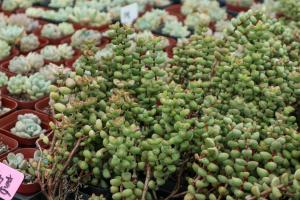How Do Wild Plants Arrive to Pots
Whether you are a seasoned plant enthusiast or just getting started with gardening, you may have wondered how wild plants end up in pots. While some plants are intentionally planted in containers, others may make their way into pots by sheer luck or natural propagation. In this article, we will explore some of the main ways wild plants arrive to pots.
Birds and Animals
One of the most common ways that wild plants arrive to pots is through birds and other animals. Seeds can easily become attached to fur, feathers, or beaks, and can then be carried and dropped into a pot or container. Birds and small mammals like squirrels and chipmunks are especially known for spreading seeds around as they forage for food. While some of these seeds may not survive or take root in a pot, others can thrive and grow into beautiful plants.
Natural Propagation
Wild plants are experts at reproducing and propagating themselves, and many species are quite resilient in tough environments. This means that even if a plant is not intentionally planted in a pot or container, it may still find a way to take root and grow. Whether through wind dispersal, water transport, or other methods, wild plants are resourceful and adaptable, and may surprise you with their ability to find a way into your garden or balcony.
Intentional Planting
Of course, not all wild plants that end up in pots are there by accident. Some gardeners intentionally plant wildflowers, herbs, or other wild species in containers to create a unique and natural look. These plants can be a great addition to a garden or balcony, and can attract pollinators and other beneficial insects to your home. And because they are adapted to living in the wild, they often require less maintenance and care than other plants.
Contamination
Unfortunately, wild plants can also arrive in pots through contamination, either through soil or other planting materials. This can be especially problematic if the plant is invasive or harmful to other species in your garden. To avoid contamination, it is important to use clean soil, pots, and other planting equipment. And if you notice a plant in your pot or container that you did not intentionally plant, it is important to identify the species and determine whether it should be removed.
Conclusion
In conclusion, wild plants can find their way into pots and containers through a variety of ways, from natural propagation to intentional planting to contamination. Gardeners can take advantage of these natural processes to create unique and beautiful gardens, but it is important to be aware of the potential risks and take steps to prevent invasive or harmful species from spreading. By understanding how wild plants arrive to pots and containers, we can create healthy and vibrant gardens that are full of life and beauty.

 how many times do yo...
how many times do yo... how many planted tre...
how many planted tre... how many pine trees ...
how many pine trees ... how many pecan trees...
how many pecan trees... how many plants comp...
how many plants comp... how many plants can ...
how many plants can ... how many plants and ...
how many plants and ... how many pepper plan...
how many pepper plan...
































